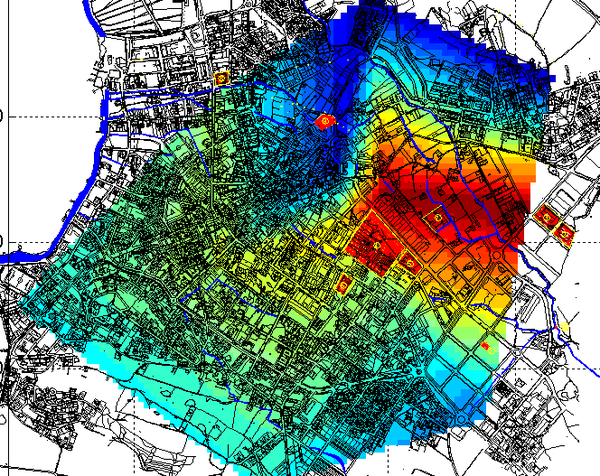Air quality control in urban areas
The Laboratori del Centre de Medi Ambient was created in 1981 as a collaborative entity of the Ministerio de Indústria y Energía in industrial environmental issues in the Escola Tècnica Superior d’Enginyeria Industrial de Barcelona of the Universitat Politècnica de Catalunya. Since then, numerous activities have been developed concerning teaching, research and development, and services to private companies and public administrations. In recent times, research has been mainly focused in the development of methodologies and devices for real air quality evaluation.
The different research developments carried out at our laboratory have been focused on answering the constantly higher social demands related to air quality. Our work has focalized in: the generation of tools for odorous compounds characterization during odour episodes, the determination of the origin of odorous episodes, the characterization of organic pollution (volatile organic compounds (VOC), semivolatile organic compounds (SVOC) and polycyclic aromatic hydrocarbons (PAH),…) in both indoor and outdoor urban areas, the manufacture of sampling devices with automatic and remote activation, the prediction of the impacts form known emission sources through numerical modelling in urban and complex orographic areas, territorial planning systems, etc… The developed techniques have been validated through the evaluation of the obtained results in full-scale and their publication in high impact factor journals.
 |
 |
 |
 |
 |
LCMA has the state of the art technology to evaluate outdoor air quality:
- Volatile organic compounds (VOC) control in air. Air quality control in urban areas. Detection, identification and quantification of VOC with dynamic sampling and analysis through thermal desorption coupled to gas chromatography/mass spectrometry (TD-GC/MS)
- Semi-volatile organic compounds (SVOC) and polycyclic aromatic hydrocarbons (PAH) controls in gas phase
- Solid suspended particles, PM10 and PM2,5 control in air through gravimetric analysis (High air volume samplers). Evaluation of fraction correlations.
- Determination of heavy metals in air by Inductively coupled plasma mass spectrometry (ICP-MS)
- PAH control in particulate phase by high air volume sampler and analysis through gas chromatography/mass spectrometry
- Odour episodes control. Identification and quantification of the odour generating compounds by dynamic sampling and analysis through thermal desorption coupled to gas chromatography/mass spectrometry (TD-GC/MS)
- Determination of the Annoyance Index (AI) through social control
- Identification of the origin of the episodes sources through the analysis of the data from the meteorological evaluation, chemical control, social control and numeric modelling (back-trajectory)
- Atmospheric dispersion studies of already installed activities through the characterization of the emission sources and the application of mathematical models: TAPM, CALPUFF, LCMA, AERMOD, ...
- Programming of discontinuous processes in potentially emitting activities. Minimization of impacts through a thorough study of the different processes, the characterization of the emissions, the meteorological analysis of the area and the application of dispersion models (TAPM, CALPUFF, LCMA, AERMOD,...)
- Development of air quality maps in urban areas based in chemical control. Integration of the obtained data in geographic information systems
- Development of odour maps in urban areas based in chemical control. Integration of the obtained data in geographic information systems
- Design of odours and air quality control programmes in urban areas
- Application of the olfatometric standard VDI 3940 in urban areas
- Development of impact prediction maps based in numerical modelling to minimize costs in air quality control programmes
- Development of impact prediction maps for territorial planning
- Development of impact prediction maps for internal and external traffic in urban areas
Share: